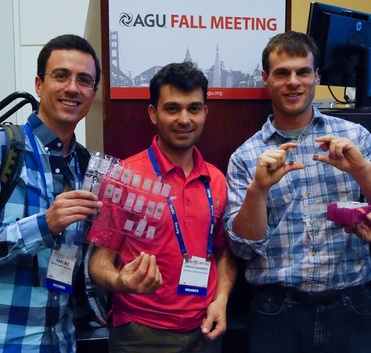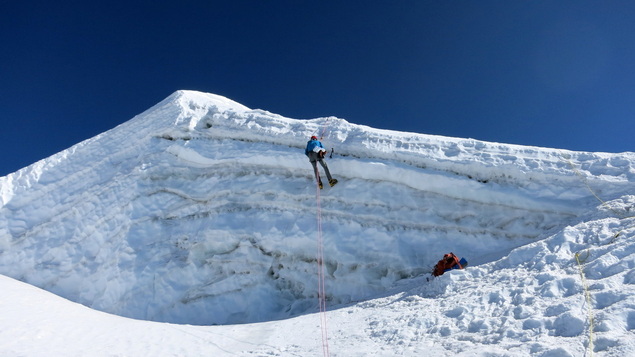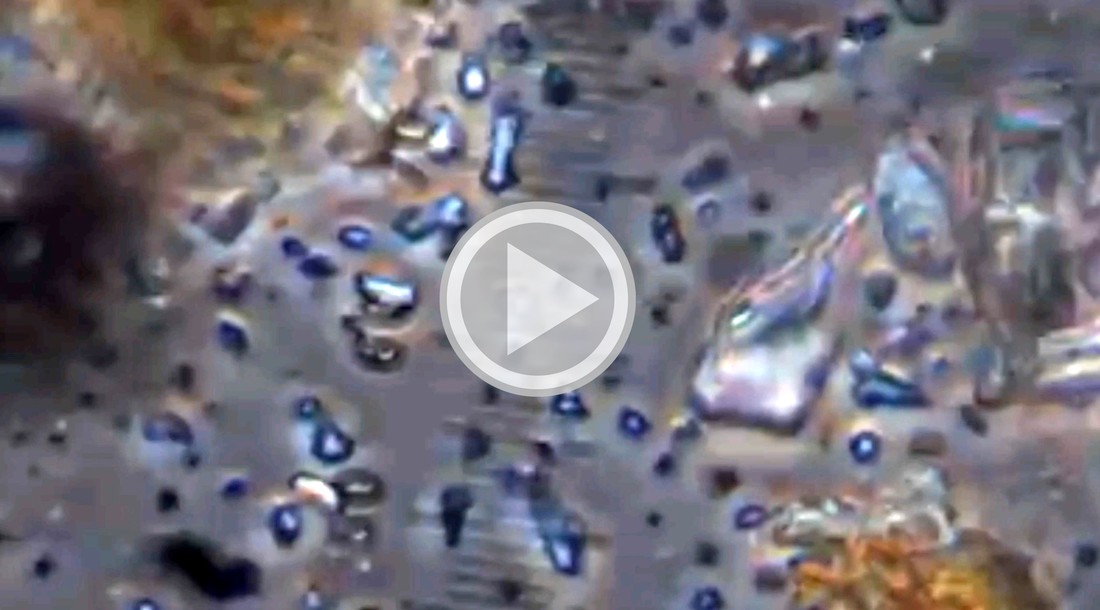“It made the session very exciting,” Dragos said.
 Mountaineer Hari Mix (left) and ASC Executive Director Gregg Trienish (right), hold samples Hari collected for our partner scientist Dr. Dragos Zaharescu (middle).
Mountaineer Hari Mix (left) and ASC Executive Director Gregg Trienish (right), hold samples Hari collected for our partner scientist Dr. Dragos Zaharescu (middle).
Two of our partner scientists stepped up to the plate for ASC this winter, organizing a session about our work at the American Geophysical Union annual meeting—the largest, most influential earth science conference in the world.
With 23,000-plus attendees, the conference is a platform for presenting new research spanning the entire realm of Earth and space science, said ASC partner Dr. Dragos Zaharescu, a research fellow at Biosphere 2 who set up the session with Dr. Natalie Kehrwald, an ASC glaciologist partner who works with the University of Venice.
Entitled Is Global Citizen Science the Next Big Science?, the session featured ASC mountaineer Dr. Hari Mix, a paleoclimatologist, and Executive Director Gregg Treinish.
“For years I wanted to get in touch with mountaineers to see about the possibilities of obtaining samples for my own research on thinning glaciers,” said Natalie, who learned of ASC at AGU in 2011. “I have had great interactions with ASC and would like other scientists to know this great opportunity exists.”
|
As an affirmation, both Natalie and Dragos are currently planning to publish the results of their work with ASC athletes—Natalie on glacial thinning in the Himalaya, and Dragos on the microbial and chemical data found on high elevation rock samples.
“I really see this special kind of citizen science really taking off in the future, the same way you see Elon Musk taking off and the space business being successful,” Dragos said. “That’s where ASC does a great job,” Hari says. “Making sure things are understandable, protocols are being followed, and people understand why they’re doing things.” |
Watch a 15-second video of microbes collected by ASC adventurer Veronique Verhoeven [University of Antwerp] from George Island, Franz Joseph Land) for our partner scientist, Dr. Dragos Zaharescu [University of Arizona].
“As you can see, they are very busy chewing on rock,” Dragos explained. “That’s how soil is born. These critters were freeze dried in a lab device and came back to life in less than a minute. It is a remarkable example of how life can thrive in extreme conditions on Earth.” |


